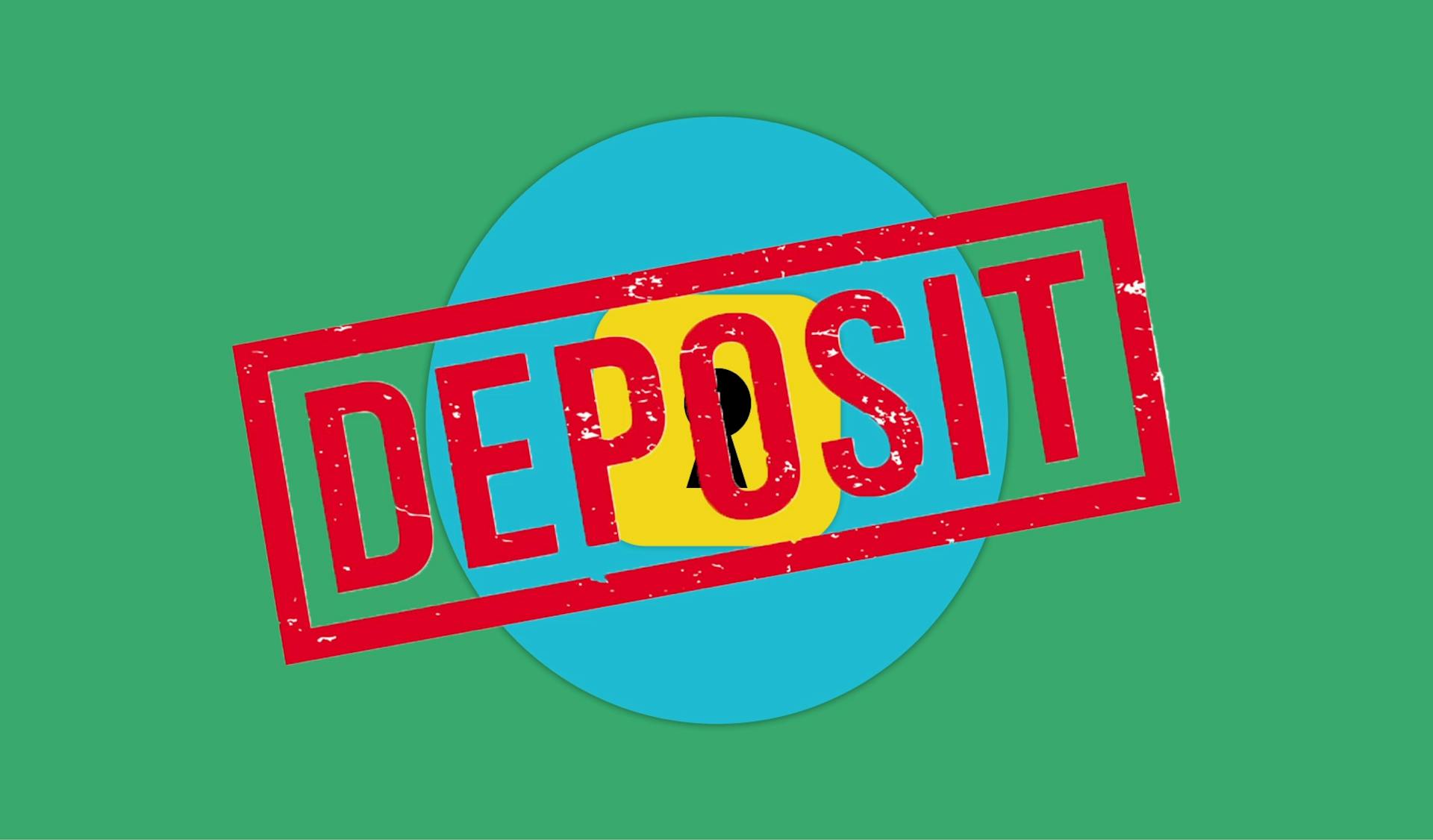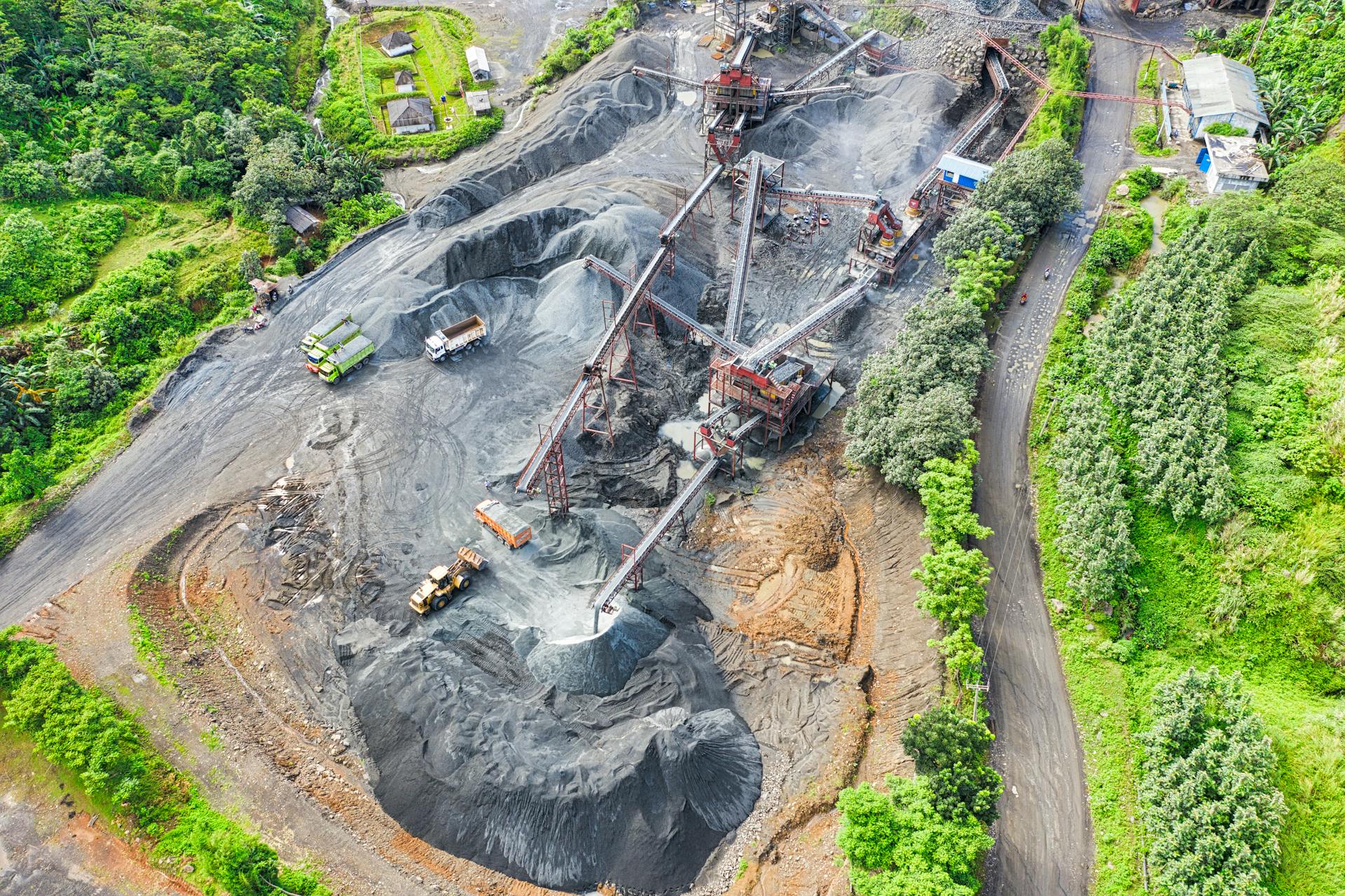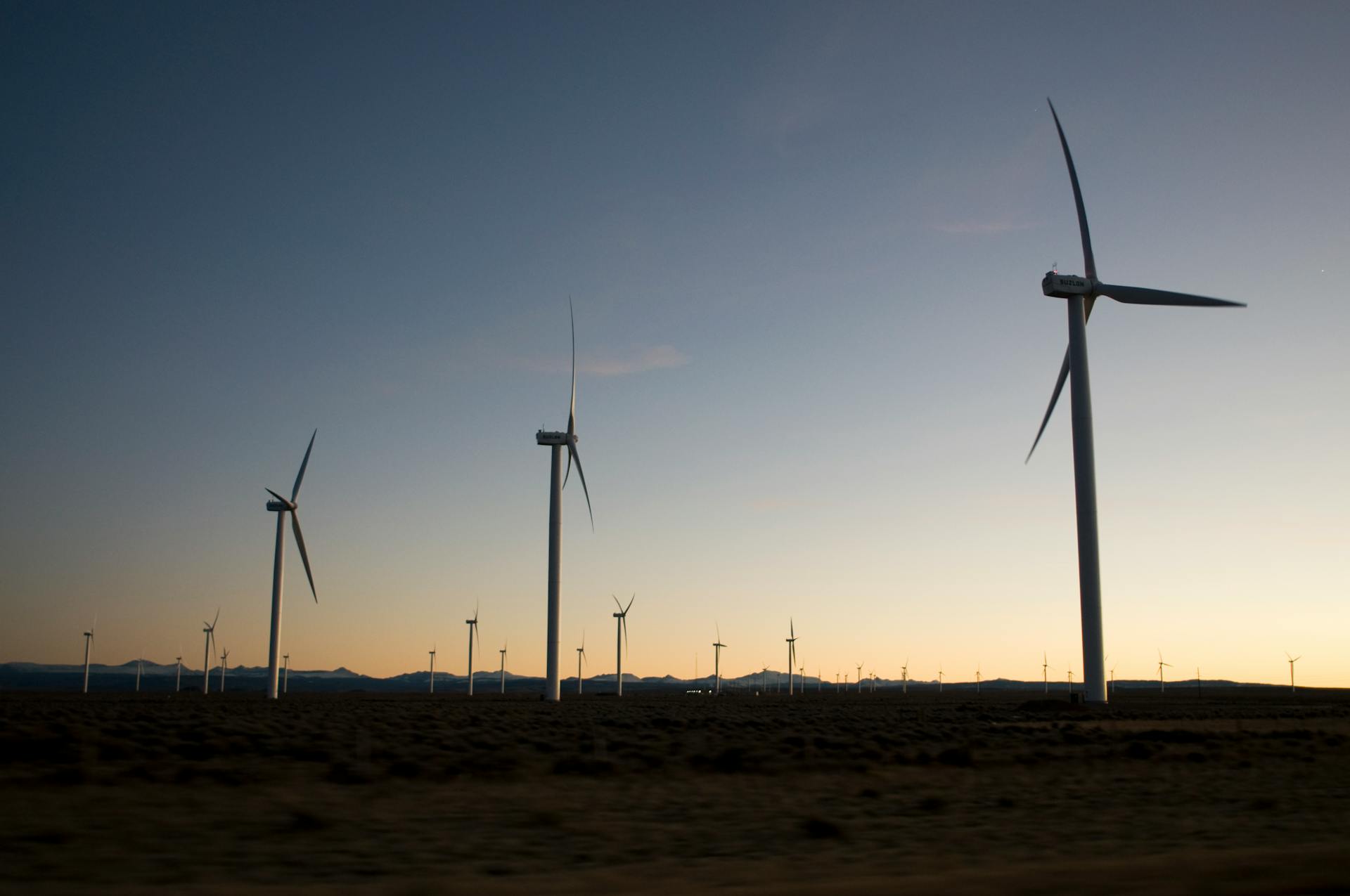
Green microfinance is a game-changer for low-income communities, offering financial services that are both environmentally friendly and inclusive. Green microfinance initiatives have been shown to reduce carbon emissions by 5% to 10% in participating communities.
By providing small loans and savings services, green microfinance helps individuals and small businesses invest in renewable energy, energy-efficient appliances, and sustainable agriculture. This not only reduces their environmental footprint but also improves their economic well-being.
Research has found that green microfinance programs can have a significant impact on reducing energy consumption, with some programs achieving a 20% reduction in energy use among participating households.
Worth a look: Catching Small Green Vegetables
Climate Change and MFIs
Brazil is a prime example of a country where microfinance institutions (MFIs) can play a significant role in addressing climate change. With its rich biodiversity and significant contributions to global greenhouse gas emissions, Brazil is a key player in the fight against climate change.
Brazil's rural microcredit institutions already offer important synergies with climate-related actions, such as providing loans for environmental protection projects. These projects include renewable energy, forestry, water storage, and more, which are designed to meet environmental financing and mitigation/adaptation activities at below market interest rates for smallholder farmers.
The country has several mechanisms to help rural MFIs finance more adapted crops without increasing administration costs. For instance, under the National Programme for Strengthening Family Farming (Pronaf), Brazilian rural MFIs have free access to agricultural zoning on more adapted crops for specific geographic areas.
In Brazil, microfinance institutions like Agroamigo and Cresol Baser have already started incorporating environmental education and training for clients, and credit unions and cooperatives have included eco-friendly credit lines in their product range. Agroamigo, for example, performs environmental training on sustainable agriculture and farming production during initial sessions with prospective clients.
By integrating climate change considerations into their operations, MFIs can contribute to poverty reduction, gender equality, and improved livelihoods. In fact, green microfinance aligns with the United Nations' sustainable Development goals (SDGs), particularly Goal 13 (Climate Action) and Goal 7 (Affordable and Clean Energy).
The integration of climate change with microfinance is particularly relevant to Brazil, which is both a prominent actor in the fight against climate change and a major victim of its adversities. By combining these two realms, Brazil can offer an attractive vehicle to deliver climate change strategies to the poorest segments of its society.
Brazil's microfinance sector has experienced a boom in the last couple of years, with outstanding loans increasing from US$27 million in 2001 to around US$2.9 billion and the number of borrowers jumping from nearly 100,000 to around 3.1 million. Yet, with 4.96 out of 21.5 million micro-entrepreneurs still working in the informal sector and some 10 million informal microenterprises still lacking credit access, much of the potential for microfinance to expand still remains untapped in Brazil.
Consider reading: Microfinance Companies
Financing Social Economy Actors
Financing social economy actors is a crucial aspect of green microfinance. In Brazil, microfinance institutions like CrediAmigo and AgroAmigo already offer environmental education and training for clients, promoting greater environmental responsibility.
Green loans for sustainable agriculture are also on the rise, with MFIs like the one in Kenya providing financial assistance to smallholder farmers for investments in organic farming, drip irrigation, and agroforestry. This approach not only boosts farmers' income but also contributes to sustainability.
By leveraging renewable energy, microfinance institutions can improve their outreach while reducing their carbon footprint. For instance, a forward-thinking MFI in rural India partnered with a local solar energy company to set up solar-powered microfinance hubs, offering financial services and generating surplus energy to be sold back to the grid.
A unique perspective: Green Energy Finance
EU Funding for the Social Economy
The European Union is committed to supporting the social economy through various funding programs. The InvestEU program is one such initiative that provides opportunities for microfinance institutions and social enterprise finance providers.
EU funding can be a game-changer for social economy actors, enabling them to access capital and scale their impact. The SIFTA program is another example of an EU initiative that supports social entrepreneurship and innovation.
In the context of Central and Eastern Europe, the outlook for using financial instruments to support the social economy is promising. Advanced markets in this region are already seeing significant adoption of green finance practices.
By leveraging EU funding, social economy actors can access the resources they need to drive positive change. This can include funding for green loans, solar-powered microfinance hubs, and other initiatives that promote sustainability and social impact.
Innovative financing models, such as green loans, are being used to support sustainable agriculture and other environmentally friendly practices. This approach is not only good for the environment but also provides economic benefits to farmers and local communities.
EU funding can help bridge the gap between social economy actors and the resources they need to grow and thrive. By providing access to capital and expertise, EU funding can help social economy actors scale their impact and drive positive change in their communities.
Discover more: Green Finance Loans
Financing Social Economy Actors
Financing social economy actors can be a game-changer for marginalized communities. In Brazil, for instance, microfinance institutions like CrediAmigo and AgroAmigo offer environmental education and training to clients, promoting sustainable agriculture practices.
The Brazilian government's Pronaf program provides subsidies for rural credit lines that support environmental protection projects, such as renewable energy and forestry. This initiative has already benefited thousands of smallholder farmers.
In Kenya, microfinance institutions are introducing "green loans" for sustainable agriculture practices, such as organic farming and drip irrigation. These loans have helped farmers increase crop yields and improve soil health.
Green finance is not just about loans; it's also about operations. A global microfinance network has implemented energy-efficient office spaces and reduced paper usage, becoming carbon-neutral in the process.
In Costa Rica, microfinance institutions are supporting eco-friendly microenterprises, such as organic farming and eco-tourism ventures. These initiatives have created jobs and contributed to local economies while preserving biodiversity.
Worth a look: Green Mortgage Loans
Brazil's microfinance sector has experienced significant growth, with outstanding loans increasing from $27 million in 2001 to $2.9 billion in recent years. However, much of the potential for microfinance to expand remains untapped, particularly in the informal sector.
Innovative insurance products, such as crop insurance, are being offered to smallholder farmers in Bangladesh and Kenya to help them cope with natural disasters and climate-related risks.
A different take: American Express Green Card Travel Insurance
Sustainable Finance
Sustainable finance is all about making financial decisions that benefit both people and the planet. It's about recognizing that economic growth can't come at the cost of our environment. Green microfinance is a key part of this movement, providing financial services to individuals and small businesses in a way that promotes sustainability.
Green microfinance institutions can minimize their environmental footprint by adopting eco-friendly practices, such as using energy-efficient technologies and reducing paper usage. For example, a microfinance bank in rural India switched to solar-powered ATMs, reducing its reliance on fossil fuels and contributing to cleaner air.
If this caught your attention, see: Microfinance Focus
Microfinance green initiatives can also help reduce poverty and promote economic growth. By providing financial services to marginalized communities, microfinance institutions can empower individuals to start their own businesses and improve their livelihoods. For instance, a women-focused microcredit program in Kenya provides loans for solar lanterns, empowering rural women and reducing their dependence on kerosene lamps.
Climate change poses significant risks to microfinance portfolios, but green finance can help mitigate these risks by investing in climate-resilient sectors, such as renewable energy and organic farming. For example, a microenterprise lending platform in Bangladesh offers loans for cyclone-resistant housing, protecting vulnerable communities from natural disasters.
By integrating green principles into their operations, microfinance institutions can create a positive cycle of social, economic, and ecological well-being. This can lead to long-term viability and success for the institution, as well as improved livelihoods for the communities they serve. For instance, a green microfinance institution in Indonesia secured funding from impact investors, allowing it to expand its services and reach more clients.
Measuring impact is essential for assessing the effectiveness of green microfinance initiatives. This can be done through metrics such as portfolio at risk, social outreach, and environmental impact score. For example, a microfinance institution in Peru regularly tracks the number of clients lifted out of poverty and the reduction in greenhouse gas emissions resulting from its green lending initiatives.
Broaden your view: Priority Sector Lending Certificates
By embracing green microfinance, microfinance institutions can contribute significantly to a greener, more inclusive future. This can be achieved through various practices, such as developing climate-resilient financial products, leveraging technology to enhance efficiency and outreach, and promoting green awareness among clients. For instance, a Colombian MFI conducts workshops on climate change adaptation alongside basic financial literacy sessions, educating clients about energy-efficient practices and their financial implications.
Frequently Asked Questions
What is an example of microfinance?
Microfinance includes small loans, savings accounts, insurance, and payment services for low-income individuals and communities. Examples of microfinance include providing small loans to start a business or offering insurance to protect against unexpected expenses.
Sources
- https://www.scielo.br/j/rae/a/N54RxT5mNg4zqyFwxzJXDSh/
- https://mfc.org.pl/tag/green-microfinance/
- https://link.springer.com/article/10.1007/s10551-013-1942-5
- https://www.huffpost.com/entry/green-microfinance-a-tool_b_8992036
- https://fastercapital.com/content/Microfinance-green--How-to-Use-Green-Finance-for-Microfinance-and-Increase-Your-Sustainability.html
Featured Images: pexels.com


